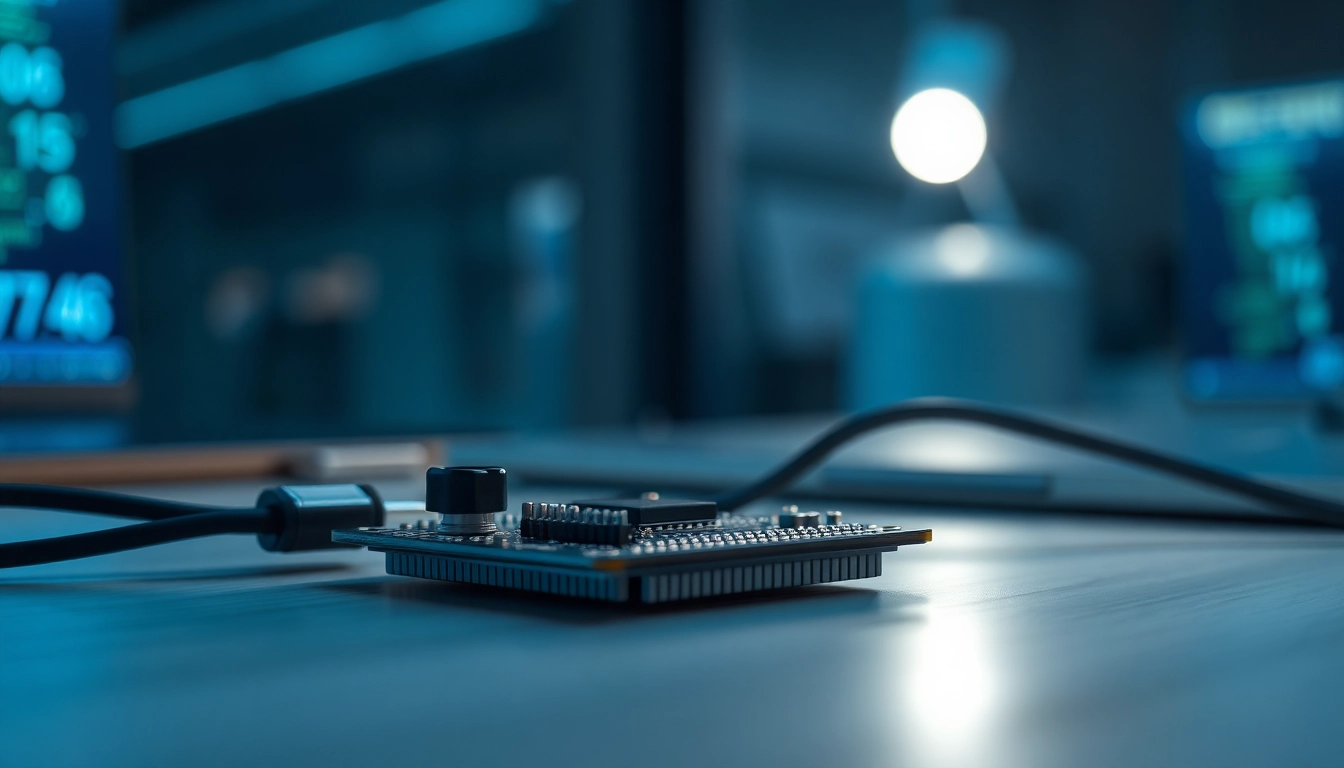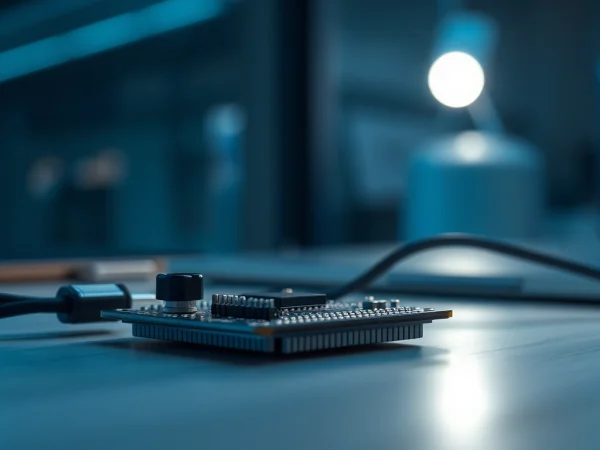Unlocking Connectivity: The Versatile LoRa Module for IoT Applications
Introduction to LoRa Modules
What is a LoRa Module?
LoRa modules represent a pivotal technology in the realm of Internet of Things (IoT) communications. Derived from “Long Range”, LoRa modules facilitate long-range, low-power communication, providing a robust solution for various applications across different industries. They leverage the LoRaWAN (Long Range Wide Area Network) protocol, enabling devices to communicate wirelessly over significant distances. As a result, a LoRa module is integral in connecting numerous devices, making it a cornerstone for smart cities, agricultural monitoring, and industrial automation.
History and Development
The development of LoRa technology traces back to the early 2000s when it was initially conceived by Semtech Corporation. The driving force behind this innovation was the necessity for a communication method that could serve a multitude of sensors across expansive areas—something traditional technologies couldn’t achieve efficiently. By 2015, this led to the establishment of the LoRa Alliance, a collective which aimed to standardize and promote the LoRaWAN protocol globally, ensuring interoperability among devices and fostering a vibrant ecosystem for IoT applications.
Key Features and Benefits
LoRa modules are renowned for several key features that collectively enhance their usability in IoT solutions:
– Long Range: LoRa modules can transmit data over distances exceeding 10 kilometers in rural settings and several kilometers in urban environments.
– Low Power Consumption: Designed for battery efficiency, LoRa modules can operate for years on small batteries, making them ideal for remote sensors.
– Scalability: The LoRaWAN network can accommodate thousands of devices within a single gateway, which is essential for large-scale IoT deployments.
– Secure Communication: Using AES encryption, LoRa technology ensures that data transmission remains secure from potential threats.
These features make LoRa modules an attractive choice for developers and businesses looking to embark on IoT projects.
How LoRa Technology Works
Understanding the LoRaWAN Protocol
The LoRaWAN protocol is designed specifically for low-power wide-area networks (LPWAN). It enables the transmission of data via a star topology where end nodes communicate directly with gateways that connect to the internet. This architecture enhances network efficiency and conserves power, as devices can remain in low-power sleep states for extended periods.
Furthermore, LoRaWAN features a unique approach to adaptive data rate technology that optimizes data transmission based on the distance from the gateway, further increasing the range and efficiency of communication.
Signal Range and Frequency
LoRa technology predominantly operates in unlicensed frequency bands, typically around 868 MHz in Europe and 915 MHz in the United States. The modulation technique—Chirp Spread Spectrum—enables resilient communication even in noisy environments. The signal range can vary depending on environmental factors, antenna selection, and other variables, but it generally ranges from 2 to 15 kilometers.
In urban areas, buildings and infrastructure can diminish signal strength, making gateway placement critical for maintaining robust coverage. Employing multiple gateways can ensure comprehensive network coverage and reduce dead zones for effective device connectivity.
Power Consumption Considerations
One of the standout features of LoRa modules is their low power consumption. Unlike other wireless technologies that frequently transmit or require constant communication, LoRa devices can operate in sleep modes, waking up only to send or receive data. This capability not only extends the lifespan of battery-operated devices but also reduces the overall operational costs associated with maintenance and replacements.
When designing an IoT solution, developers must consider not only the power requirements of the LoRa module itself but also how often data needs to be transmitted. By balancing the frequency of transmissions with power-saving features, developers can optimize battery life and enhance the efficiency of their systems.
Applications of LoRa Modules
Smart Agriculture Solutions
The agricultural sector has embraced LoRa technology for its immense potential to promote efficiency and sustainability. LoRa modules are used for soil moisture monitoring, weather tracking, and crop management. Farmers can deploy sensors across vast fields to gather real-time data, enabling precise irrigation and resource management.
For instance, a remotely located soil moisture sensor can send updates regarding the humidity levels directly to a farmer’s mobile device, allowing them to make informed decisions about watering schedules without the need to traverse their land physically.
Urban IoT Implementations
In urban environments, IoT applications powered by LoRa technology have the potential to transform city living. Smart waste management systems, for example, utilize LoRa modules to organize waste collection routes based on real-time data on bin fill levels. This approach reduces operational costs and enhances the efficiency of waste collection services.
Moreover, cities can deploy LoRa-enabled sensors for monitoring air quality, traffic flow, and noise levels, contributing to more sustainable urban planning and improved quality of life for residents.
Industrial Monitoring Systems
Industries are also leveraging LoRa modules for monitoring equipment and operational conditions. LoRa technology facilitates real-time data collection for temperature, humidity, vibration, and other critical parameters in manufacturing processes or storage facilities.
Such monitoring systems help identify anomalies early, allowing for preventive maintenance and minimizing downtime. The low-power aspect of LoRa modules is particularly valuable in industrial settings, where device replacements can be costly and disruptive.
Choosing the Right LoRa Module
Factors to Consider
When selecting a LoRa module for a specific application, several factors must be evaluated:
– Range Requirements: Assess the distance needed for reliable communication between nodes and gateways.
– Power Constraints: Consider the device’s expected battery life and how often it will transmit data.
– Frequency Compatibility: Ensure the module operates on the correct frequency for the region in which it will be deployed.
Additionally, evaluating the ease of integration with existing systems and looking for modules that provide comprehensive developer resources is essential for smooth implementation.
Popular Brands and Models
Several brands have established themselves in the LoRa module market, offering various models tailored for specific needs. Popular options include:
– Semtech: Known for their original development of LoRa technology, Semtech’s modules are at the forefront of the market.
– Murata: Providing compact modules, Murata’s offerings focus on versatility and ease of integration.
– HopeRF: Their models are particularly noted for cost-effectiveness and reliability in diverse application scenarios.
Researching and comparing the specifications of these modules can guide developers to the right choice for their projects.
Comparative Analysis of Features
Conducting a comparative analysis of different LoRa modules should encompass several key features:
– Sensitivity Specifications: Check the receiver sensitivity which influences the distance and reliability of communication.
– Integration Options: Some modules offer additional interfaces like SPI or UART, which can ease integration into various systems.
– Size and Form Factor: Depending on the application, the physical size of the module may play a crucial role in its implementation, especially in space-constrained environments.
Such analyses allow for informed decision-making when choosing a module for a specific application.
Future of LoRa Technology
Upcoming Trends in IoT
The future of LoRa technology is bright, with several emerging trends on the horizon. The integration of artificial intelligence (AI) with IoT devices is set to enhance data processing capabilities, enabling smarter decision-making based on real-time data collected through LoRa networks.
Additionally, the advent of 5G technology presents opportunities for improved connectivity and the expansion of IoT applications, although LoRa will maintain its place for low-power requirements where extensive coverage is necessary.
Challenges and Innovations
Despite its many advantages, the implementation of LoRa technology does come with challenges. In densely populated urban areas, potential interference from other devices may impact signal reliability. Continued innovation within the LoRa ecosystem aims to develop protocols and solutions that mitigate such interference.
Moreover, expanding education and awareness about LoRa technology among developers and end-users are essential to maximizing its potential.
Case Studies and Success Stories
Numerous success stories from various industries highlight the effectiveness of LoRa modules. For example, a successful deployment in a smart city initiative demonstrated how LoRa technology transformed utility management, reducing operational costs by enabling real-time monitoring and reducing unnecessary resource expenditure.
Similarly, in the agricultural sector, farms utilizing LoRa monitoring systems reported significant increases in yield and reduction in water usage, showcasing the real-world applicability and effectiveness of these modules.
In conclusion, as IoT continues to evolve, LoRa technology stands out as a vital player in the connectivity landscape, enabling diverse applications that enhance efficiency and promote sustainable practices across multiple sectors.

